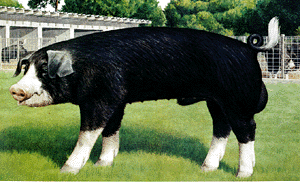Almost every year, I fly to Omaha to visit my best friend, Christi. It’s often during the worst time of the year, weather wise, to visit Nebraska. Not sure how that tradition got started. But on my visit in 2009, I decided we were going on a field trip to a little town about 25 miles from Omaha called Blair. I consider this my first cemetery “hop” and it had nothing to do with Find a Grave.com because it involved my own family tree.
Through Ancestry.com, I discovered that a distant cousin of mine, Rufus Claar, owned a farm in Blair during the late 1800s. That might not seem like a big deal but the rest of the Claars lived in Southeast Ohio and most remained there. What made him decide, as a young man, to uproot and move hundreds of miles away to an unknown future?
Rufus was one of 13 children, son of Samuel and Lydia Claar. His little sister, Eliza Jane Claar Weed, made the move to Nebraska in 1875 with her husband, Charles. One brother ended up in Kansas, a sister in Indiana. One brother died at the age of 22, fighting for the Union in the Civil War.

Rufus was actually born in 1848′ not 1852. This was taken from the book: “Men and Women of Nebraska — A Book of Portraits”, the Washington County edition.
The 1870 U.S. Census notes that Rufus was working as a laborer for veterinarian/farmer Milton B. Wild (what a name!) near Blair. Wild’s wife was Vilena Carter, from Scioto County, Ohio, which is quite close to where the Claars lived. According to Wild’s obituary, he and Vilena moved to Nebraska in 1865 to start farming in the new territory. My guess is that Rufus, a teenager then, heard stories from the Carter family and thought life on the prairie might be more exciting than Ohio.
In 1878, Rufus married Alma Stewart and they had five children. The twins, Lisle and Arthur, were born on April 26, 1880 and both died on July 26, 1881. I could not find their gravestones but according to records, they are buried with their parents in the Claar plot in Blair Cemetery.
Along with running a large farm, Rufus bred champion Poland-China pigs. One of his prize-winning pigs, Black Joe (that’s not his picture below), fathered literally more than a hundred swine across the Midwest. That’s a lot of bacon!
An auction of much of Rufus’ stock and farm implements took place right before he died from pneumonia in 1902, only 54 years old. The rest of his land was sold because the remaining Claar children chose not to continue running the family farm. All three eventually left the state.
Pat Hunsche, a kind lady who lives in Blair, drove us over to the city cemetery. It was a slip, slide and away kind of day due to the ice and snow. I got out of the car and took about three steps before I slipped and fell flat on my dignity. Not a great way to start but it made all three of us laugh.
I did locate Rufus and Alma’s graves. Pat told me that if I looked out and down the hill, I could see what was once Rufus’ farmland. It lay vast and frozen in the distance, still being used for crops today. Not overrun by a freeway or shopping centers.

My pictures of Rufus’ grave did not turn out well. Alma’s gravestone shows how frozen the ground was that day.
Later we drove through the area and I saw for myself what Rufus had seen. Wide open spaces and nothing for miles. And I felt like it was meant for me to be there, to connect with this part of my history.
We drove to nearby Kennard Cemetery to visit the graves of Eliza Jane and her husband, Charles, a Civil War veteran. His obituary describes in rather stark detail what lead to his demise.
“He had blood poison in his foot and it was necessary to amputate the leg about half way between the ankle and the knee. This had caused him a great deal of pain and suffering and life didn’t mean much to him at being age, 81 years.”
My trip to Blair proved to be a catalyst for my current love of cemetery hopping. Connecting with a cousin from another time and place was part of that. Maybe the thrill of the hunt was, too.
All I know is I don’t plan on stopping my hopping any time soon.





love it!
I’m so glad! Stay tuned for more. 🙂
Great story during very hard times!!
Finally got a chance to read about your first “hop”. Love it! I have always enjoyed cemeteries – for many reasons.
I loved reading about your experience!
Pingback: Back to Where It All Began: More Stories from Blair City Cemetery | Adventures in Cemetery Hopping
Pingback: Okie Road Trip 2019: Beating the Clock at Little Rock, Ark.’s Mount Holly Cemetery, Part III | Adventures in Cemetery Hopping